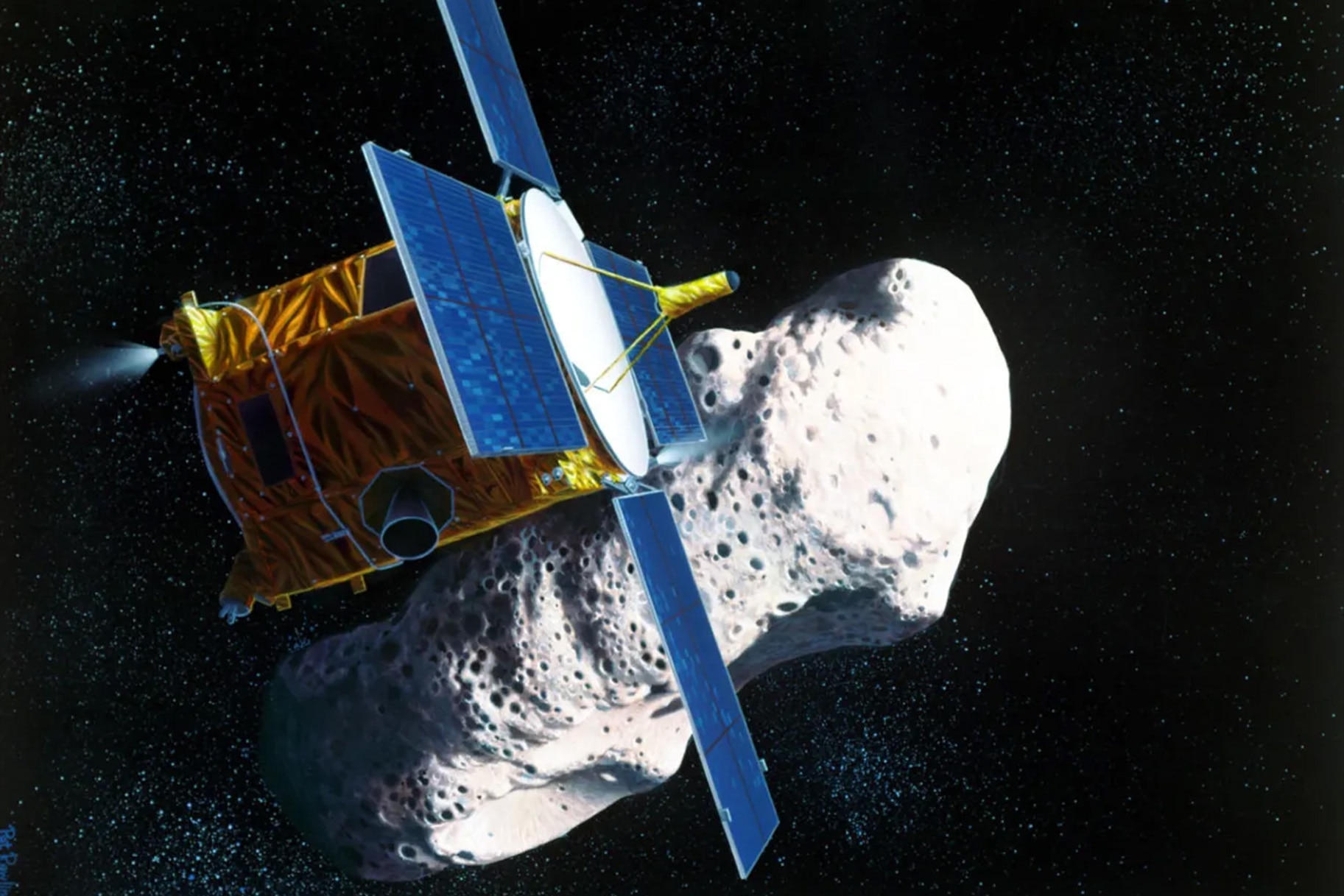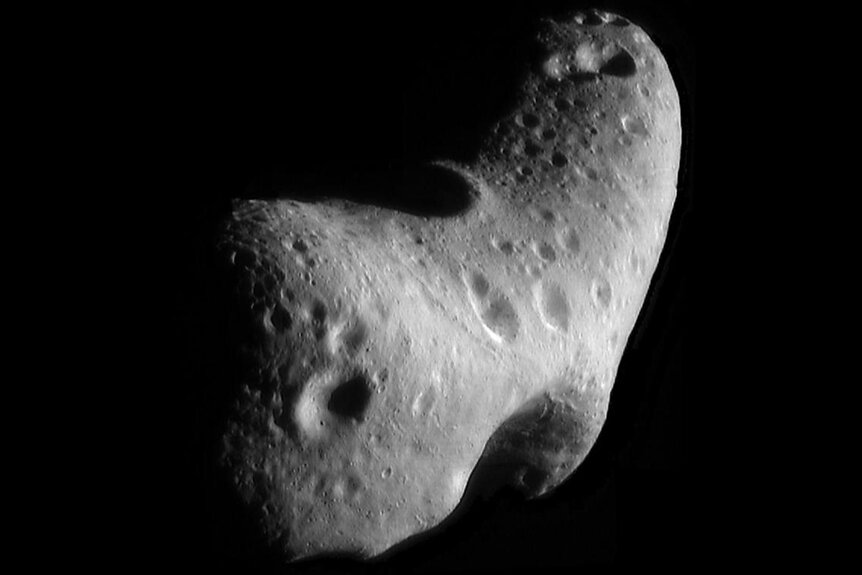Create a free profile to get unlimited access to exclusive videos, sweepstakes, and more!
NEAR and Eros: The Story of the First Asteroid Landed on by a Spacecraft
Maybe we're afraid of asteroids because we're afraid of love.

The simply named movie Asteroid (streaming now on Peacock) tells the story of how one family is impacted (literally and figuratively) by a looming asteroid. It follows a familiar narrative track: Asteroid meets humans, asteroid falls in love with humans (we're guessing here), the attraction is so powerful that the asteroid smashes into humans. Sometimes the humans destroy the asteroid to save themselves. Either way, these sorts of cosmological romances rarely end well.
The story of 433 Eros and the NEAR Shoemaker spacecraft is the rare exception – we smash into the asteroid instead of the other way around – and it ends with our characters spending eternity together. Cute.
The First Time NASA (or Anyone) Landed on an Asteroid
In recent years, space agencies around the world have been snatching up headlines after landing on various asteroids, picking up surface samples, and delivering them back to Earth. The Japan Aerospace Exploration Agency (JAXA) sent its Hayabusa2 spacecraft to the asteroid Ryugu on a sample return mission, and NASA recently recovered a sample from the asteroid Bennu, courtesy of its OSIRIS-REx mission.
It might seem like the age of asteroid exploration happened all at once, seemingly overnight, but these recent successes all trace back to NASA’s NEAR spacecraft, and its historic asteroid landing back in 2001. The semi-redundant acronym is short for Near Earth Asteroid Rendezvous and was designed to do precisely what the name implies. On March 14, 2000, years after NEAR launched but before its mission was completed, it was rechristened NEAR Shoemaker, in honor of the scientist Eugene Shoemaker.
For More on Asteroids:
AstroForge Space Mining Company Prepares for Launch to Secret Asteroid Target
NASA Charts Mission to Apophis, the Near-Earth Asteroid Named for the Egyptian God of Chaos
Emirati Space Agency Planning Exploratory Road Trip Through the Asteroid Belt
NEAR launched from Earth on February 17, 1996, aiming for the asteroid 433 Eros. It’s the second largest near-Earth asteroid, spanning 33 kilometers at its widest points. After launch, NEAR spent more than a year in hibernation, crossing hundreds of thousands of miles of nearly empty space. It woke up in June of 1997 for a flyby of the asteroid Mathilde. A week later, NEAR enacted a burn to change its velocity and course correct. It would pass by the Earth for a gravity assist before setting out for Eros, roughly 335 million kilometers (221 million miles) from Earth.
Mission controllers attempted an orbital insertion around Eros in December of 1998 but that burn failed. The mission then went into a backup plan which meant NEAR had to fly past Eros and swing back around on Valentine’s Day 2000. NEAR became the first human-made craft to ever enter into an orbit around an asteroid, which is where our love story really takes off.
RELATED: Making Sense of Big Bertha, a Meteorite FROM Earth, Found on the Moon
Over the next year, NEAR was constantly in Eros’ orbit. It was almost (literally) as if they were bound to one another by some unseen force (gravity). The primary mission involved classifying the asteroid’s composition, shape, mass distribution, and magnetic field. In short, NEAR wanted to learn everything about Eros, inside and out. In any successful relationship, you need to really care about who your partner is, and what makes them tick.
Just shy of a year later, on February 12, 2001, when the world was practically screaming for the two of them to just kiss already, NEAR finally made its move. It’s onboard camera took 69 high resolution photos of the surface – just a small fraction of the roughly 160,000 images NEAR took of Eros, talk about an Instagram boyfriend – during a controlled descent. Its final velocity was a meager 6.4 kilometers per hour (4 mph) before it nestled into the loving embrace of Eros.
Despite not being designed for landing in the first place, NEAR survived descent and contact with the surface. We know that because it continued taking measurements and sending data for about two weeks after landing. That means that about a year after becoming the first spacecraft to orbit an asteroid, NEAR became the first spacecraft to land on one. Our last transmission from NEAR came on February 28, 2001, after which extreme cold put the little spacecraft to sleep forever. It’s still up there, cradled into the crook of Eros’ neck, and it’s not going anywhere anytime soon.
Catch Asteroid, streaming now on Peacock.



























